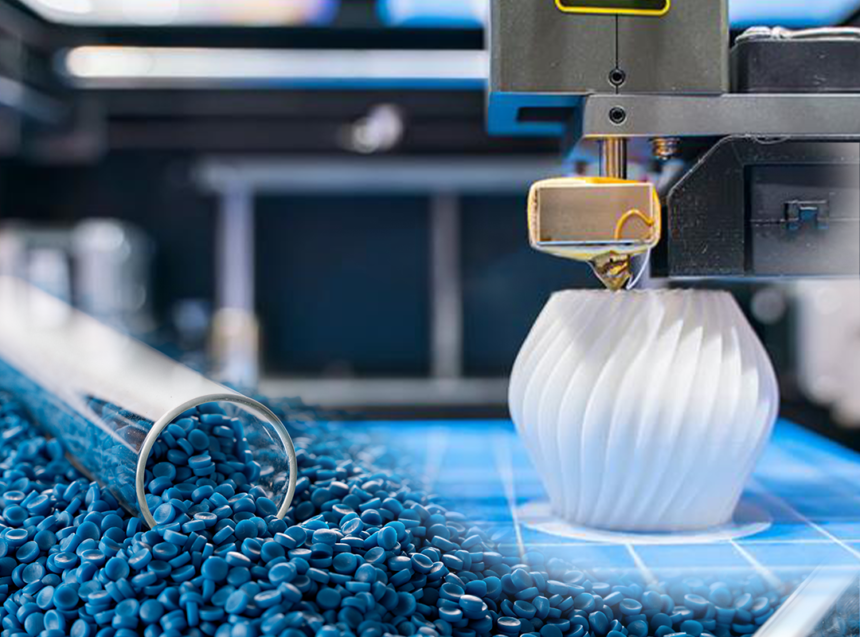Additive manufacturing continues to transform how engineers design, prototype, and produce functional parts. But as the industry matures, it’s becoming clear that geometry alone doesn’t determine success. The material matters—often more than the model itself.
Choosing the right polymer for 3D printing is no longer just a technical detail. It’s a strategic decision that influences cost, performance, compliance, and long-term durability. In real-world environments, mismatched material selection can cause premature failures, increase post-processing complexity, or prevent parts from meeting regulatory standards.
For engineering teams that rely on additive for prototyping, tooling, or production, understanding how materials behave within specific processes is now fundamental.
Application-Driven Selection
The most effective material decisions start not with datasheets but with the application itself. Engineers are increasingly advised to begin with the functional requirements of the part. Will it bear load? Will it flex or move under strain? Will it face heat, moisture, UV exposure, or aggressive chemicals? Is it expected to pass through sterilization protocols or meet specific compliance standards?
Answering these questions up front allows teams to narrow not only the material, but also the additive process that will deliver the best results. A flexible part intended for repeated motion may point toward TPU printed via FDM. A chemically resistant enclosure exposed to heat may require PEI printed on an industrial platform. Selecting the process and the polymer in tandem helps avoid mismatches that compromise mechanical or environmental performance.
Understanding the Role of Process
While material properties are often discussed generically—“ABS is strong,” “Nylon is tough”—those characteristics vary dramatically depending on the additive process used. FDM parts, for example, exhibit pronounced directional strength and visible layer lines. SLS and MJF, on the other hand, offer more isotropic mechanical properties and finer detail due to powder bed fusion processes. SLA offers the best surface resolution, but limited toughness and fewer engineering-grade materials.
This process dependency means that engineers must consider not only what the material is, but how it is printed. A part that performs well in Nylon PA12 via MJF may not behave similarly if printed in the same base material via extrusion. Thermal expansion, layer adhesion, surface quality, and tolerances all change with process.
Comparing Common Engineering Polymers
Among polymer options, a few materials stand out for their versatility and reliability. Nylon 12 (PA12) remains one of the most widely used materials in SLS and MJF, valued for its toughness, chemical resistance, and long-term stability. TPU is ideal for parts requiring flexibility and impact resistance, though it presents challenges with dimensional accuracy and print speed.
ABS, once the workhorse of prototyping, is increasingly being replaced by PETG in FDM systems due to PETG’s lower warping and better chemical resistance. For structural parts where stiffness matters, carbon fiber-filled nylon offers an excellent strength-to-weight ratio and machinability. At the high end, PEI (ULTEM™ 9085) delivers unmatched thermal and flame-resistant performance, particularly for aerospace and medical applications—but it demands precise hardware and experience to print consistently.
Post-Processing and Performance
Material decisions also influence post-processing requirements. Some parts may require support removal, surface finishing, sealing, or machining. In these cases, engineers must factor in how well a material tolerates sanding, drilling, or solvent treatment. Some resins and polymers resist secondary operations, while others, like ABS or PETG, respond well to smoothing or painting.
Cleaning and sterilization protocols introduce another layer of consideration. Autoclave cycles can distort or weaken plastics that aren’t engineered for high-temperature resilience. Gamma sterilization, often used in medical settings, can cause embrittlement in lower-grade polymers. Materials like PEI and certain grades of Nylon are better suited to survive these cycles intact.
Avoiding Costly Mistakes
The most common pitfalls in material selection come from assumptions. Engineers may overestimate a material’s strength without accounting for orientation. They may use a flexible polymer where rigidity is required—or vice versa. Or they may ignore the environmental exposure a part will face, only to discover degradation under UV light or corrosion from cleaning agents.
These mistakes are avoidable. Prototyping remains essential, particularly for assemblies, press fits, or parts with tight tolerances. Early validation ensures that the chosen material will function as expected in its actual context—not just in isolation.
Materials as a Competitive Advantage
As additive manufacturing becomes more integral to production workflows, material selection is emerging as a key differentiator. Projects that succeed at scale are those that align performance requirements with process capabilities and material behavior from the outset.
Smart material selection reduces waste, minimizes post-processing, and extends the life of printed components. It also ensures compliance with regulatory or environmental constraints—something that becomes more important as AM parts move into mission-critical roles in aerospace, medical, and industrial applications.
Conclusion: Choosing with Purpose
In additive manufacturing, materials aren’t just functional—they’re strategic. For engineers and project leads, selecting the right polymer is as critical as nailing the part geometry. It’s the difference between a prototype that proves a concept and a component that holds up in the field.
By understanding how materials behave in different processes and environments, design teams can make better decisions earlier—saving time, reducing risk, and delivering performance where it counts.
Need guidance selecting the right material for your additive manufacturing project?
RapidMade offers expert consultation, industrial 3D printing services, and deep experience across the full range of engineering polymers.
Visit rapidmade.com or contact info@rapidmade.com to get started.










 /home/u448362301/domains/theexpotab.com/public_html/wp-content/themes/foxiz/templates/popup.php on line 167
/home/u448362301/domains/theexpotab.com/public_html/wp-content/themes/foxiz/templates/popup.php on line 167